Tea Plantation Handunugoda Tea Estate
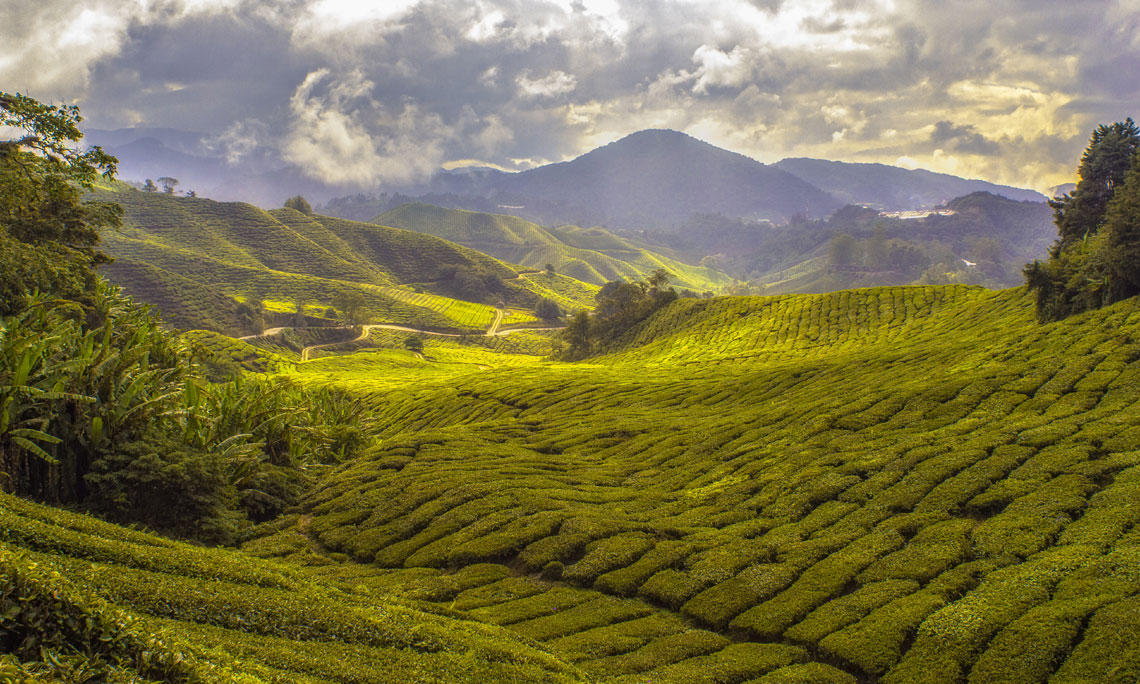
Sri Lanka is one of the world’s largest exporters of tea with a roaring tea industry that dominates the island’s central highlands. Introduced to the country by British tea planter James Taylor in 1867, tea irreversibly changed the topography, and even the demography of the country. In the wake of Sri Lanka’s coffee blight, British planters were quick to discover that tea was a more lucrative industry. As the number of tea estates rose, there was an increased need for human labor. The production of tea involves a tedious procedure of plucking, withering, rolling, oxidizing and drying – a process that requires heavy machines and plenty of manpower. Workers were shipped over from Tamil Nadu in India to maintain the plantations, and these people, an often overlooked ethnic minority in Sri Lanka, are still the main employees in the tea industry today. A visit to a tea factory has become a staple of every Sri Lanka travel itinerary, and for good reason!
Herman Teas from Ceylon is an independent Global Luxury Tea Brand, and is produced at the family owned Handunugoda tea estate nestled in Southern Province Sri Lanka. The team is driven by deep passion and commitment in revealing the allure of tea as a health beverage. At the Handunugoda tea estate, do not mass produce our exquisite teas in an industrial manner; they are artisanal producers of highly sort after world renown, Luxury Teas. Our tea Collection is exclusively created and handmade by the sole proprietor Herman Gunaratne himself. High-quality whole leaf tea is sourced from local tea gardens using only Orthodox methods of tea production, and can be brewed several times.
Guided tea plantation visit followed by a tea appreciation program is offered to all visitors, and at the end the guests are treated to a complimentary luscious cake and a pot of tea at the proprietor’s bungalow. There are Innumerable Teas to be sipped, swirled and allowed to seduce the senses. Visitors keen to purchase tea gets a chance to buy these priceless teas at the tea shop.
Mulkirigala Rock Temples
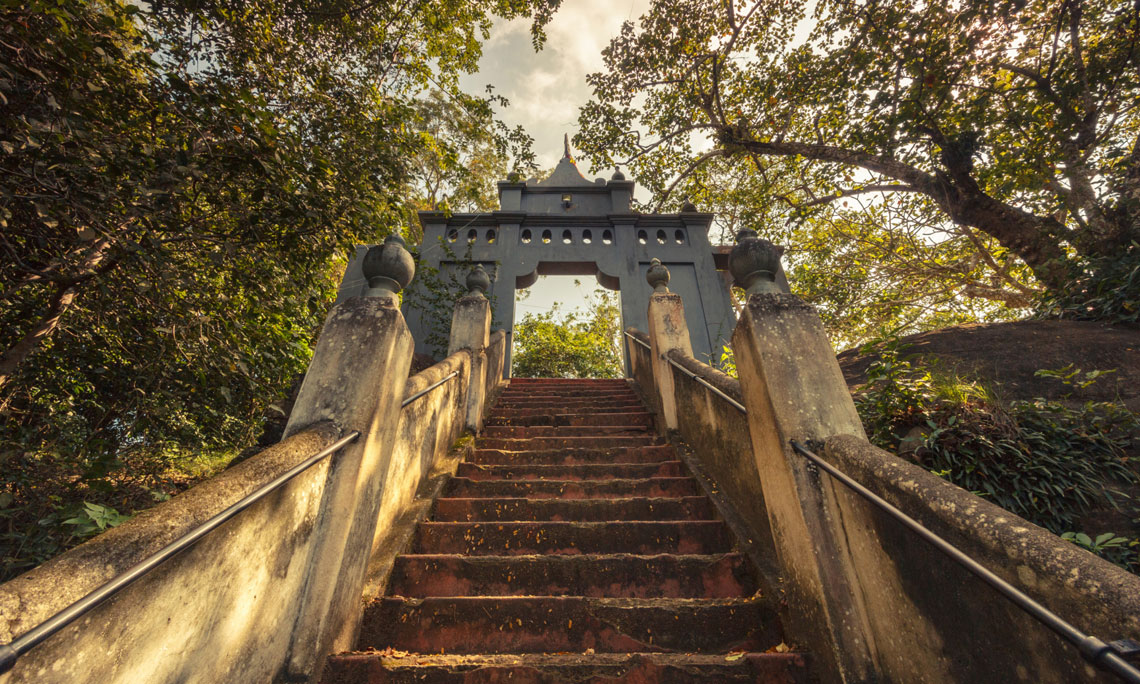
Mulkirigala Raja Maha Vihara an ancient Buddhist temple in Mulkirigala, Sri Lanka. It has been built on a 205 m high natural rock, surrounded with another four rocks known as Benagala, Kondagala, Bisogala and Seelawathiegala. The temple has been formally recognized by the Government as an archaeological site in Sri Lanka.
The site comprises of seven smaller temples and has been constructed within five areas; the Siyambalamaluwa, the Lower Temple Compound, Bomaluwa, the Royal Temple Compound, and the Upper Temple Compound. There are also caves with figurines and murals within them Clamber in a sweat up the 500 or so steps and you’ll encounter a series of seven cleft-like caves on five different terraced levels. Housed in the caves are a number of large reclining Buddha statues interspersed with smaller sitting and standing figures.
Further on up, and perched on top of the rock some 206m from the base, is a small dagoba with fine views over the surrounding country.
Temples, in some form or another, have been located here for over 2000 years, but the current incarnations, and their paintings, date from the 18th century. Nearby is a Buddhist school for young monks.
Safari Udawalawe National Park
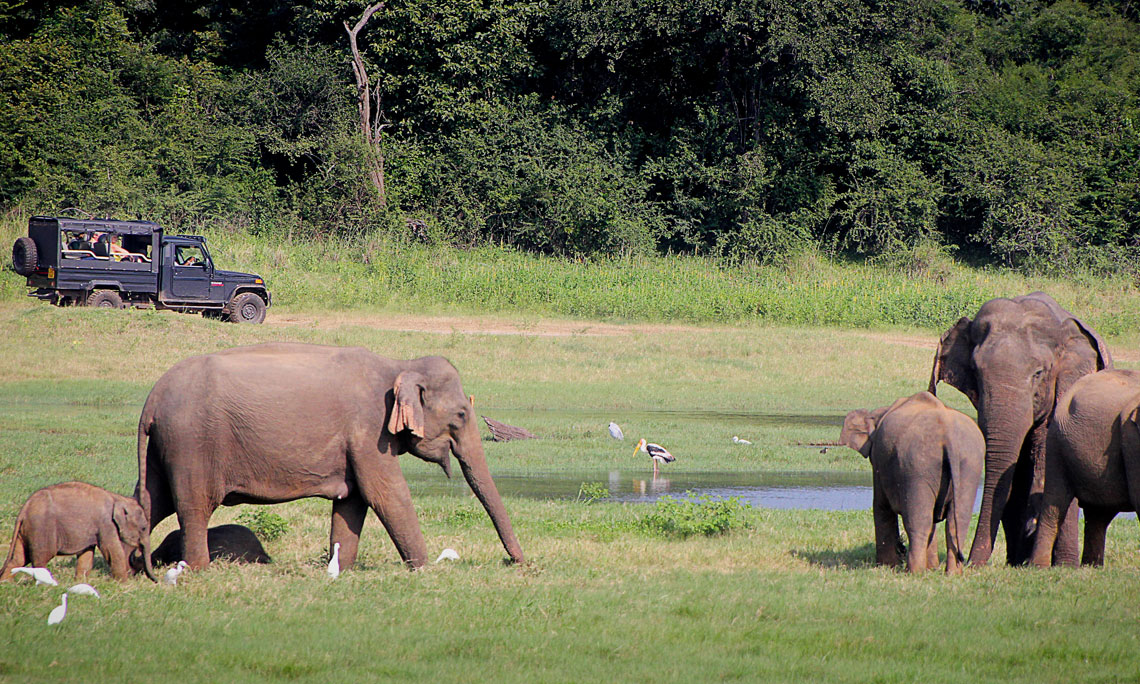
Framed by soaring highlands on its northern boundary, the UdaWalawe National Park is one of the world's best places to see wild elephants. Largely comprised of grasslands and bush forest, it's also one of the best national parks in Sri Lanka for game spotting.Stretching over a land of 30,821 hectares, Udawalawe National Park is famous for its large population of elephants. Hence, this national park is ideal to observe the herds of marvelous Asian elephants in their unique natural habitats. It is known that about 400 elephants in total are sustaining here while about 250 of them are considered as permanently resident.
Other than the elephants, the national park provides home for many other species of mammals such as the rusty- spotted cat, fishing cat, Sri Lankan leopard etc. The Sri Lankan sloth bear is rarely seen in Udawalawa national park. Sri Lankan sambar deer, Sri Lankan axis deer, Indian muntjac, Sri Lankan spotted chevrotain, wild boar and water buffalo are among other mammal species that could be seen. Golden jackal, Asian palm civet, Toque macaque, Tufted grey langur and Indian hare also reside in the park. The endemic Ceylon spiny mouse was also recorded in Udawalawe National Park in 1989.
Udawalawe sanctuary is also known as a good bird watching site in Sri Lanka. Bird lovers would get a wonderful opportunity to observe many different varieties of birds including endemic species and migrants as well. For the visitors, driving through the park in a 4WD safari jeep is the only permitted way of observing the Udawalawe national park. A half day jeep safari in the Udawalawa national park would certainly become an unfading memory in your life. Explore the wonders of Sri Lanka wild life while gaining a unique experience with a touch of adventure.
Galle Fort or Galle Fort + tea factory
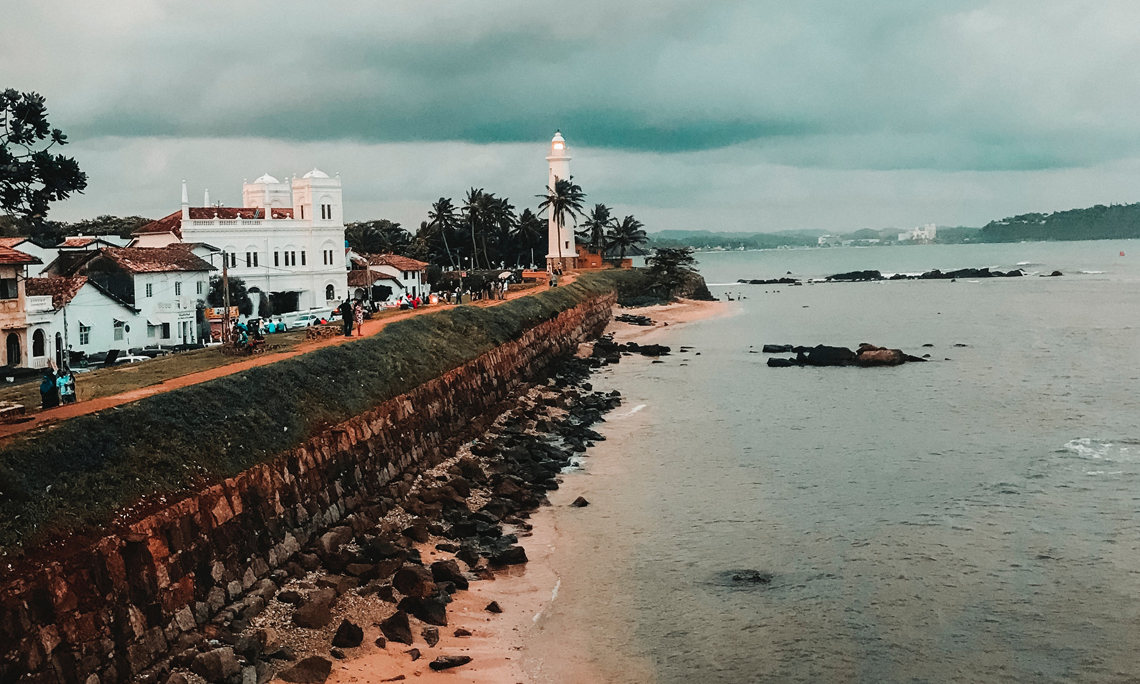
Galle is a jewel. A Unesco World Heritage Site, this historic city is a delight to explore on foot, an endlessly exotic old trading port blessed with imposing Dutch-colonial buildings, ancient mosques and churches, grand mansions and museums. Wandering its rambling lanes you'll pass stylish cafes, quirky boutiques and impeccably restored hotels owned by local and foreign artists, writers, photographers and designers.
Built by the Dutch, beginning in 1663, Galle's core is the Fort, a walled enclave surrounded on three sides by the ocean.Today’s town has grown greatly and spreads into the surroundings but the Fort is the slow beating heart of Galle‘s history. The walled city has stood since the early sixteenth century, through the Colonial periods of the Portuguese, Dutch and British and in our present times is proclaimed as an Archaeological Reserve and has been identified as a living World Heritage Site.
The old walls are a favorite promenade for Galle‘s citizens and its visitors alike.
Through the rolling streams of Time and Change, Galle still retains – as few other towns in Sri Lanka – an atmosphere of the past. A peep into the old houses reveals them to be spacious and airy, with large, ornamental doors and windows, pillared verandahs and co
You can spend half day in Galle and the other part of the day visit Tea Plantation Handunugoda Tea Estate.
Yala National Park

Yala National Park is the most visited and second largest national park in Sri Lanka, bordering the Indian Ocean.
Yala combines a strict nature reserve with a national park. Divided into 5 blocks, the park has a protected area of nearly 130,000 hectares of land consisting of light forests, scrubs, grasslands, tanks and lagoons. Two blocks are currently opened to the public.
Situated in Sri Lanka’s south-east hugging the panoramic Indian Ocean, Yala was designated a wildlife sanctuary in 1900 and was designated a national park in 1938. Ironically, the park was initially used as a hunting ground for the elite under British rule. Yala is home to 44 varieties of mammal and 215 bird species. Among its more famous residents are the world’s biggest concentration of leopards, majestic elephants, sloth bears, sambars, jackals, spotted dear, peacocks, and crocodiles.
Go for the early morning safari in Yala National Park to see Leopards, Elephants, Deer, Crocodiles, Bear and many varieties of birds. We employ best safari drivers and best quality vehicles with front facing cushioned seats.Yala National Park is very popular for its growing Leopard community and Yala is popular as one of the best places to see leopards in the world.
Kalametiya
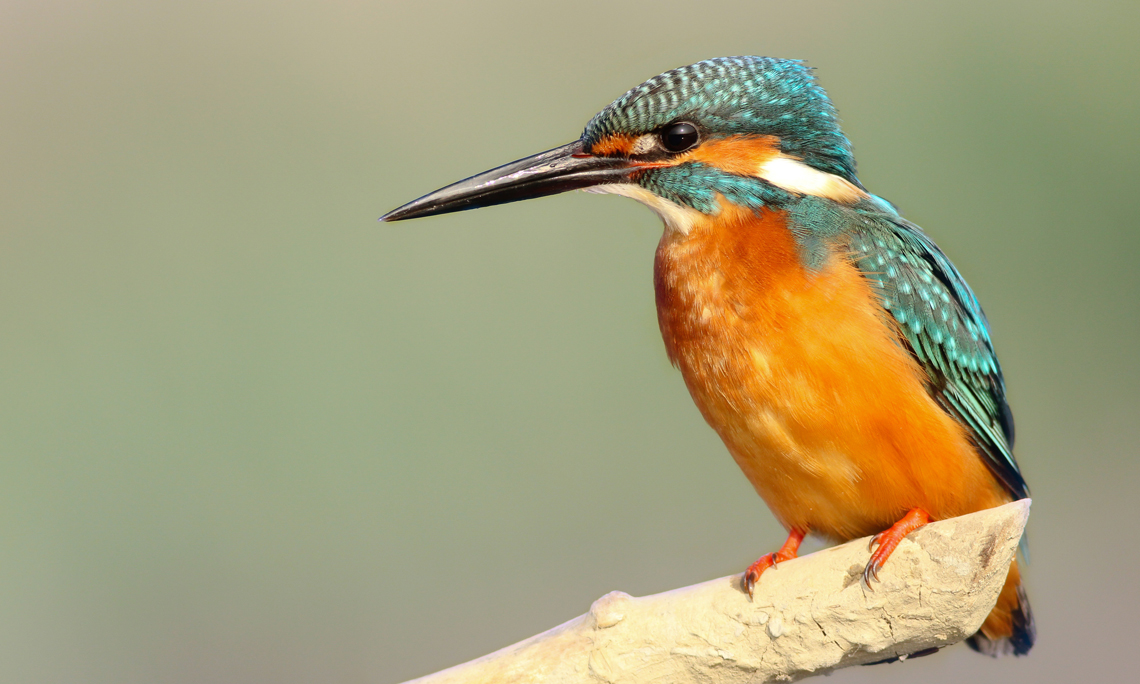
Kalametiya Bird Sanctuary is a one of oldest and main bird sanctuary in Sri lanka. In 1938 Kalametiya Bird Sanctuary was declared a wildlife sanctuary. But in 1946 Kalametiya Bird Sanctuary was abolished because of the opposition of local residents. However once again Kalametiya Bird Sanctuary was declared as a wildlife sanctuary in 1984.
Kalametiya bird sanctuary is situated in Hambantota distric Srilanka. 20 Km away from Tangalle city. today This is a main bird watching site in Srilanka. This sanctuary include Kalametiya mangrove lagoon and area. This is a brackish water lagoon very close to Kalametiya beach. There are many pictures places in this area.
There are over 150 species of birds in Kalametiya bird sanctuary including 54 migratory birds. additionally about 20 species of mammals, about 41 species of fish and 38 species of reptiles live in Kalametiya bird sanctuary. This is a haven for weaver birds. there are many weaver bird nest in the bird sanctuary.
Kalametiya Eco Bird Watching tour is a boat tour in 2 1/2 hour in the bird sanctuary. The best times for start the are 6am in the morning ans 3.30pm in the evening. This is not only a bird watching tour. You can climb rocks middle in the bird sanctuary and jungle walking.
Safari Bundala National Park
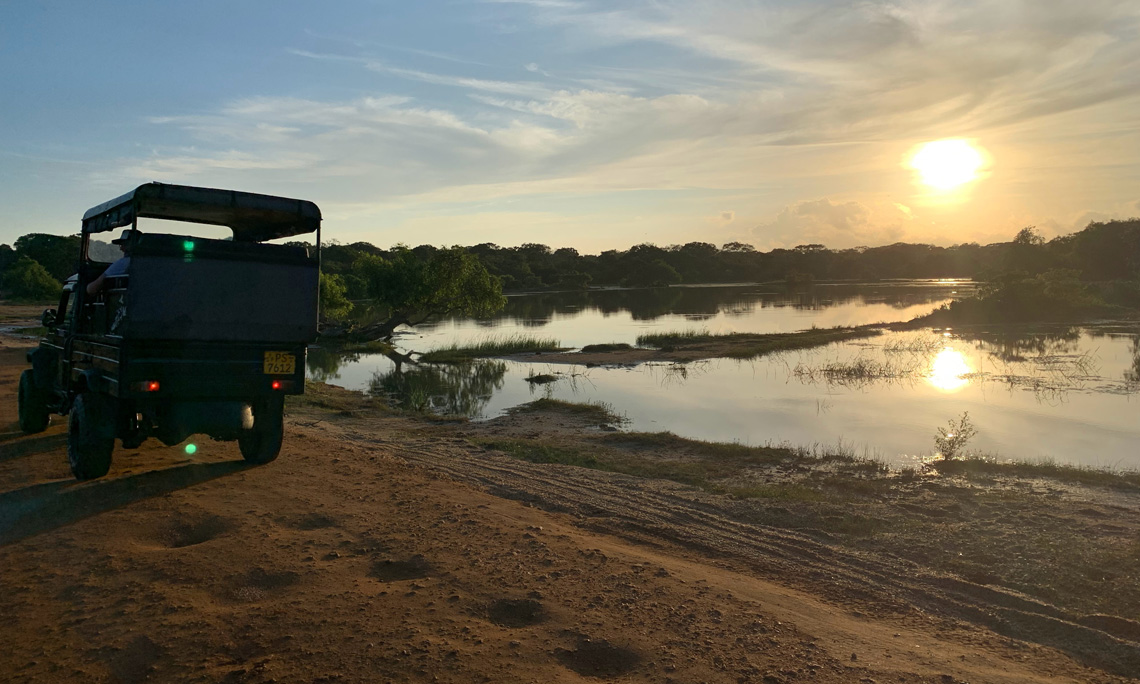
Bundala National Park is an internationally important wintering ground for migratory water birds in Sri Lanka. Bundala was designated a wildlife sanctuary in 1969 and redesignated to a national park on 4 January 1993. In 1991 Bundala became the first wetland to be declared as a Ramsar site in Sri Lanka. In 2005 the national park was designated as a biosphere reserve by UNESCO, the fourth biosphere reserve in Sri Lanka.
Bundala National Park Safari offers a great opportunity to see some amazing wildlife and bird species in the South of Sri Lanka. Don’t miss this chance to see the Greater Flamingo one of the most famed bird species that winters here.
The park as a whole is a home ground for many species of plant life, many of them aquatic. Your safari will give you a chance to see many of the 324 species of animals that can be found in Bundala. Small herds of elephants roam the park. Meanwhile, you may see langurs, pangolins, barking deer, sambar and many other types of deer, wild boar, rusty-spotted cats, black-naped hares and jackals. These are merely the tip of the iceberg. In addition to these mammals, Bundala is also famous for its crocodile population. It is the only park in Sri Lanka where you can see both the species of crocodiles available in Sri Lanka; the freshwater (mugger) crocodile and the estuarine crocodile. Other reptiles seen here are tortoises, the many species of snakes including the endemic flying snake, and turtles including all five of the species of globally endangered sea turtles that nest in Sri Lanka. Bundala is also a haven for almost 200 species of birds at the peak of migration.
Sinharaja Forest Reserve
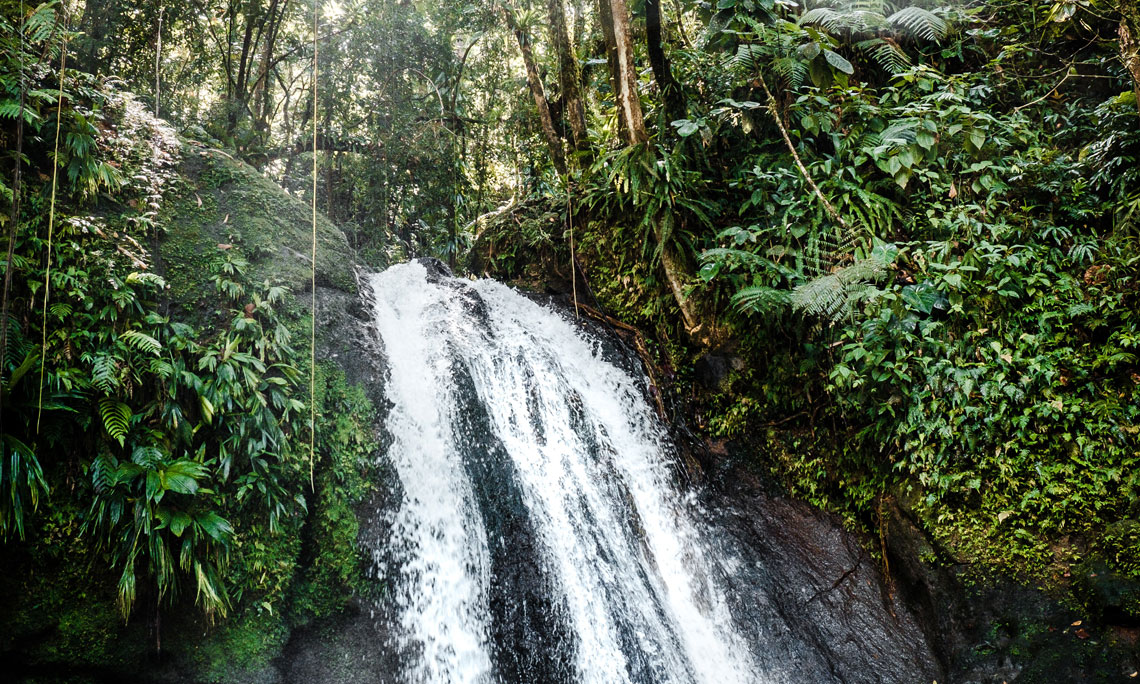
Sinharaja Rain Forest, UNESCO named a World Heritage Site in Sri Lanka. Is an ideal day trip for nature enthusiasts who visits Sri Lanka. The trip starts at 6 am from the hotel and will take 2,5 hours to reach the entrance of Sinharaja Rain Forest Start the trekking with an experience Trekker. You can decide on how far you are going to walk inside the jungle depending on your capacity.
The hilly virgin rainforest, part of the Sri Lanka lowland rain forests ecoregion, was saved from the worst of commercial logging by its inaccessibility, and was designated a World Biosphere Reserve in 1978 and a World Heritage Site in 1988. The reserve's name translates as Kingdom of the Lion.
The reserve is only 21 km (13 mi) from east to west, and a maximum of 7 km (4.3 mi) from north to south, but it is a treasure trove of endemic species, including trees, insects, amphibians, reptiles, birds and mammals.
Because of the dense vegetation, wildlife is not as easily seen as at dry-zone national parks such as Yala. There are about 3 elephants and the 15 or so leopards are rarely seen. The most common larger mammal is the endemic Purple-faced Langur.
An interesting phenomenon is that birds tend to move in mixed feeding flocks, invariably led by the fearless Greater Racket-tailed Drongo and the noisy Orange-billed Babbler. Of Sri Lanka's 26 endemic birds, the 20 rainforest species all occur here, including the elusive Red-faced Malkoha, Green-billed Coucal and Sri Lanka Blue Magpie.
Whale watching
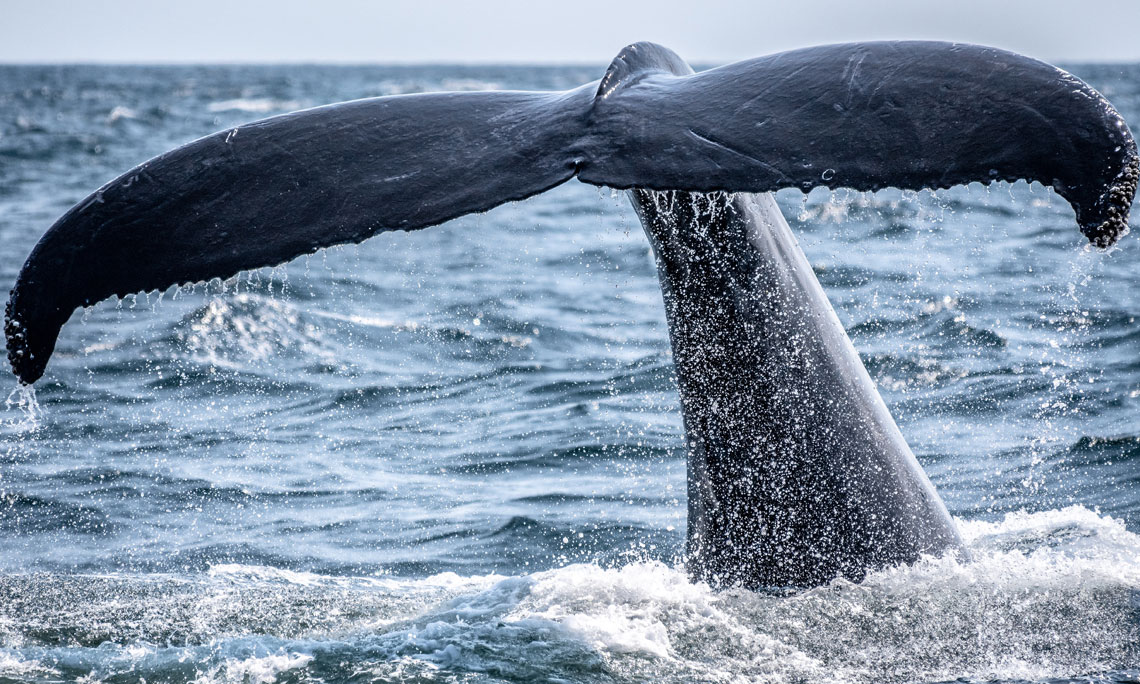
Want a vacation excursion that will stick with your kids for a lifetime? A whale watching tour might just be the answer. We provide awe-inspiring journeys out in the waters off the coast of Oceanside.Whale and dolphin watching in Mirissa is one of the most exciting water activities you can do in Sri Lanka during your holiday.
Blue whales – the largest creatures on Earth – as well as fin whales, humpbak whales, sperm whales, orcas (killer whales), dolphins, flying fish, turtles, manta rays and whale sharks can all be seen during a whale watching trip a few miles off the South Coast of Sri Lanka.
Whale watching season in Mirissa is from November till April. Departure time 6.30 from hotel with breakfast box.